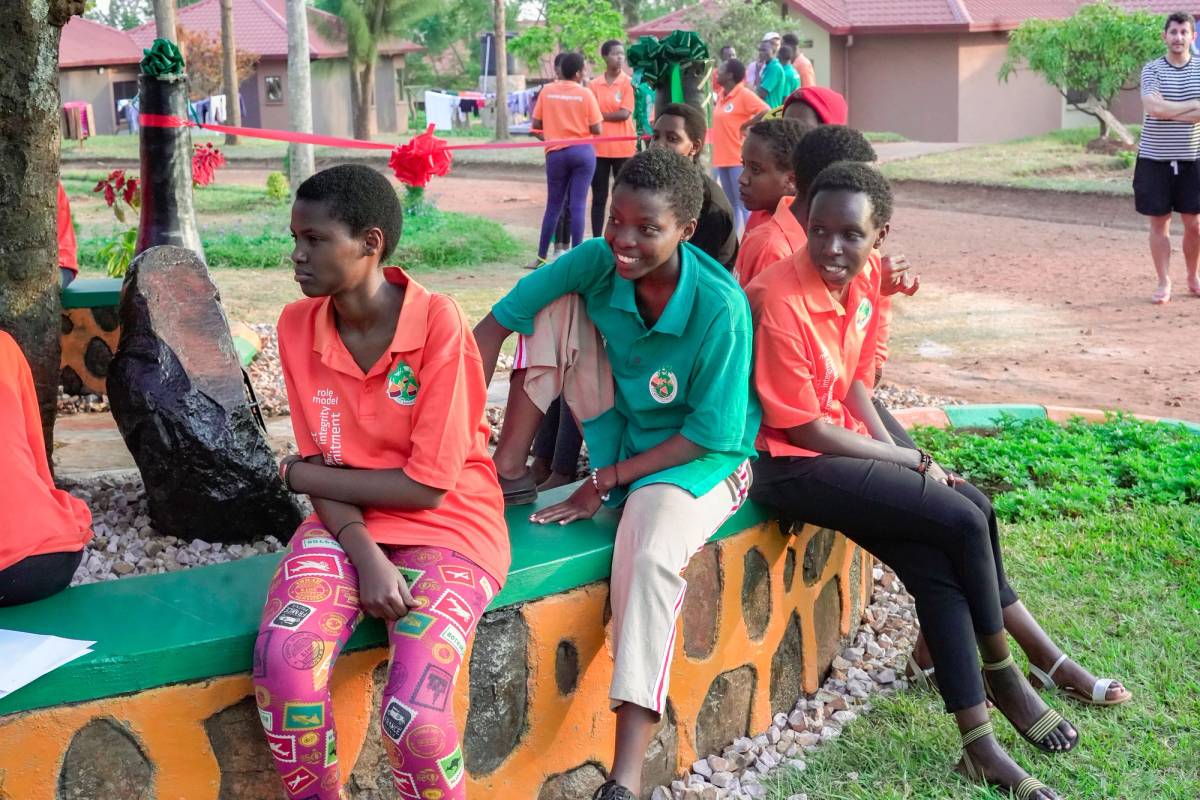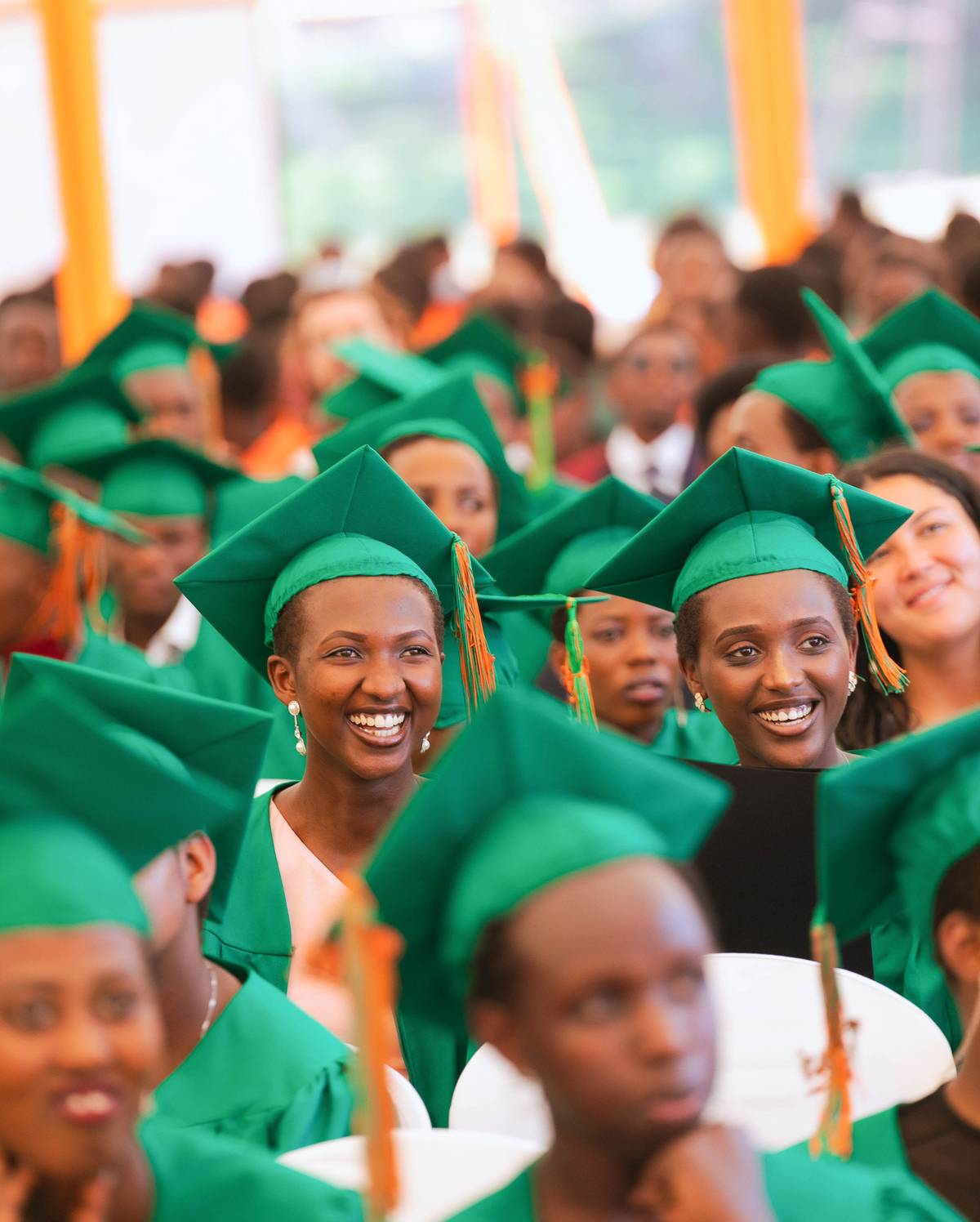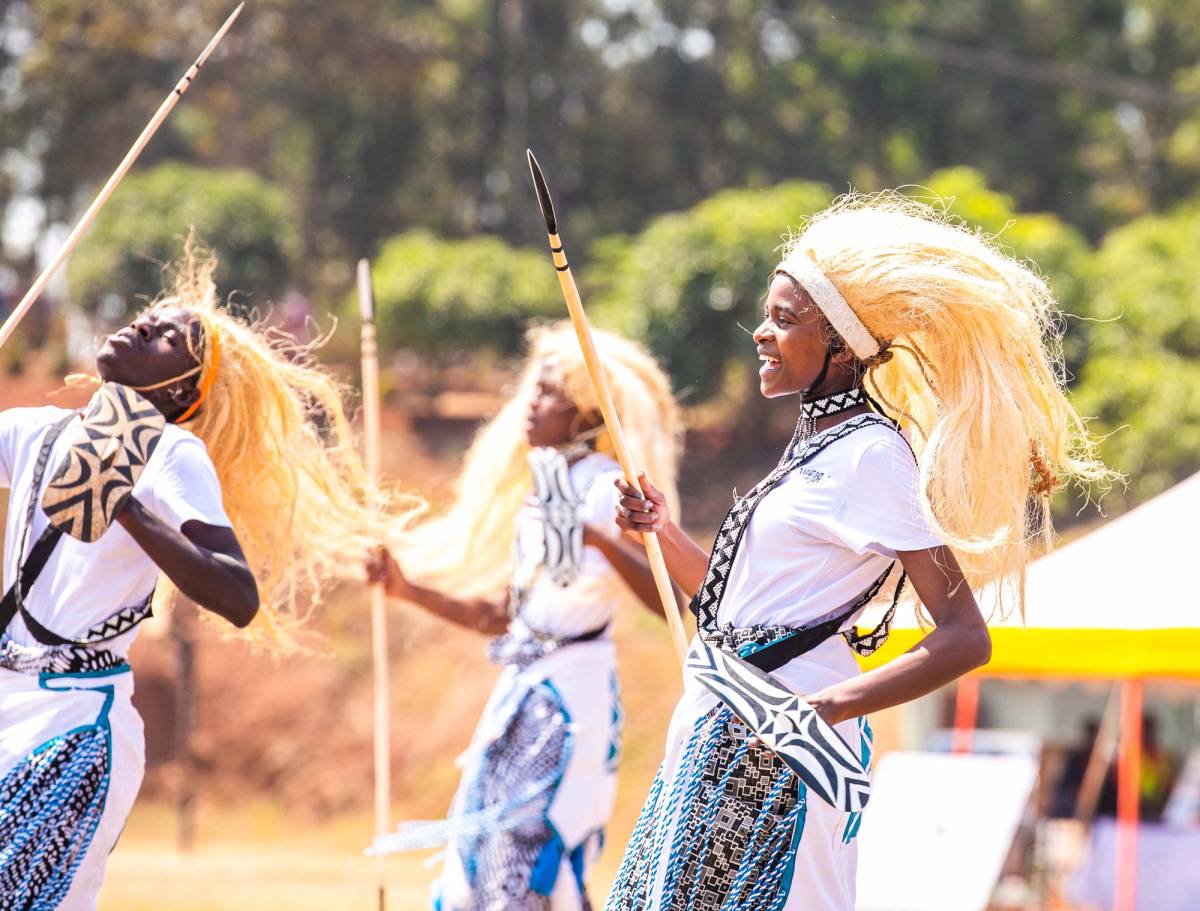Shalom, Rwanda
After the country’s genocide of 1994, a Jewish philanthropist founded a youth village modeled after orphan communities in Israel. Now researchers are asking how similar projects can benefit vulnerable youth elsewhere.



On Sept. 15, 1996, Padua Louis Gakuba was born in Ruhango in the Southern District of Rwanda. Days later, as his mother took her breakfast porridge, she was poisoned. It was murder. Months earlier, his father had been abducted and disappeared, allegedly hacked to pieces and fed to the village dogs.
Classified as Tutsi, the family had been prime targets of the genocide in Rwanda in 1994. Two years later, they were hunted for having had the temerity to survive it. The newborn Padua Louis was now an orphan.
Padua Louis and two older brothers were taken in by an uncle, swelling that household to 15. Once the boys reached their early teens, they moved into a house of their own. They cultivated the land, feeding themselves and selling the surplus at market. In school they earned top marks. On Sundays they discussed their dreams for the future.
At dinner one night in late 2010, Padua Louis watched in terror as his eldest brother frothed at mouth and his eyes bulged from their sockets. He bolted from the house and disappeared for days. He, too, had been poisoned; this time, the intent was madness. Padua Louis last saw him in early 2011.
The remaining brothers lived in fear of the next poisoning—until the end of the year, when their fortunes changed. Local authorities had named them among the 10 most vulnerable teens in the district. Educators from a residential youth village not far from Kigali, the capital of the country, had come to school to meet them.
“We were like, are these people posing as saviors who kidnap African kids?” Padua Louis chuckled as he recalled it. “We decided it was worth the risk. Anything was better than our hell life.”
Both brothers would later graduate from the Agahozo Shalom Youth Village, a holistic educational refuge for students of high school age. Established in 2008 for orphans of the genocide, it now serves some 500 of the country’s most at-risk youth, providing what is often the most stable setting of their lives. Over four years, students get a high school education, a sturdy family environment, sustained exposure to an arts practice, and medical, psychological, and emotional care. Agahozo Shalom, a fusion of Kinyarwanda and Hebrew, translates as “a peaceful place where tears are dried.”
I met Padua Louis in Rwanda in early July, just as he was about to graduate from university in Kigali on a full scholarship with degrees in hospitality management and fashion. His brother Jimmy earned his university degree last year and is pursuing a career as a musician. Together, in small venues and for schoolchildren, they play guitar duets of songs that their father once played for their mother. “It’s how we keep their memory alive and pay it forward to kids who think there’s no hope,” he said, “like we used to be.”
Some 95,000 children were orphaned in the mass butchery that slayed nearly a million Rwandans—mostly Tutsis as well as moderate Hutus—in less than 100 days in 1994. Two years after the genocide, more than 100,000 children were looking after one another in homes that lacked any adult presence.
In 2005, a Jewish philanthropist named Anne Heyman was moved to form ASYV when she was told that the orphan crisis occasioned by the genocide lacked an enduring structural solution.
“My mom recognized that Israel had developed a model for supporting kids orphaned in the Holocaust,” said Jason Merrin, Heyman’s son. (Heyman died in an equestrian fall in 2014.) In the late 1970s, when Heyman took a gap year at Kibbutz Ketura, she’d first heard of Israel’s youth villages, designed to house, educate, and help at-risk youth. “That was her starting point,” said Merrin. “Are there aspects of the Israeli youth village that can work in Rwanda? Is this something that Rwanda wants?”
Based in New York, where her children were in school, Heyman traveled every couple of months to Rwanda and Israel. “She had never set foot in Rwanda. She had no related professional experience,” said Merrin. “She was driven by her Jewishness. She saw a people going through something her people had gone through and there was a solution but no one else was doing it. She wouldn’t look away.”

Agahozo Shalom is most closely modeled on Yemin Orde Youth Village atop Mount Carmel in the north of Israel. Founded in 1953 by the British Friends of Youth Aliyah for orphans of the Holocaust, it now serves 450 at-risk youth from Israel and across the diaspora. Once she started researching models for Rwanda, she reached out to Yemin Orde due in part due to its work with Ethiopian immigrants, including onetime Knesset member Shimon Solomon. The two villages maintain an active dialogue.
They also share core philosophies tooled to their respective contexts. The well-being of the child drives every decision. Cohesive personal narratives of the past support meaningful futures. Individual healing promotes communal healing. Beautiful settings cultivate repair. Parental wholeness fosters stability.
In Israel, parent figures take the form of counselors. In Rwanda, it’s Mamas.
Students at ASYV are grouped into single-gender families of 20. Each family is headed by a Mama, who tends to the well-being of each child in addition to their daily logistics: waking the kids, hustling them out the door to school, checking in with their teachers and therapists and extracurricular instructors, keeping tabs on their schoolwork and social lives and inner lives. Most Mamas lost some or all of their own children in the genocide. Mothering at ASYV is viewed as part personal healing, part civic duty.
Like the Mamas, the on-site, full-time staff of 138 is Rwandan; a few educators are native to neighboring East African countries. Most students (95%) are Christian.
In development circles, ASYV is what is known as a Cadillac program: established by a passionate individual, sustained by philanthropy, aimed at a small number of people to achieve maximum transformational impact per person. For the fiscal year ending in August 2022, ASYV incurred $4.2 million in cash expenditures including capital improvements; some 80% of the funding came from individuals. Costing roughly $5,500 per teen per year, or $22,000 over four years, it is too expensive to grow or replicate.
Yet ultra-vulnerable youth are a ballooning global demographic. To help meet the need, ASYV has so far endeavored to share its model domestically. Its Educational Resilience Initiative trains teachers across Rwanda in student-centered learning, sexual and reproductive health education, and career development.
Now, ASYV is expanding its information-sharing efforts. Researchers at Tulane University have just undertaken a two-year evaluative study documenting its key drivers of success. “ASYV would love to see their work benefit more children. That’s where we come in,” said Nancy Mock, associate professor of international health and sustainable development at Tulane. “We will look at what’s effective and get to work on how to make it scalable to the larger problem of vulnerable youth,” such as refugees, displaced persons, and the ultrapoor.
To get to Agahozo Shalom, I got a ride one afternoon from Kigali. We alternately cruised and crawled 40 kilometers east through spectacular hill country, every inch of it devoted to small-scale, manually managed agriculture—maize, rice, potatoes, cabbage, sunflowers, fish, mangoes, passionfruit, avocadoes, and more. The immaculate two-lane blacktop teemed with humanity. Men hawked grilled, foil-wrapped ears of corn. Women balanced atop their heads produce and stalks of bamboo and, once, a sewing machine. Cyclists caught illicit lifts from diesel-spewing lorries. Schoolchildren in starched uniforms darted heart-stoppingly through traffic. A small blue-and-white sign flagged the Rwanda-Israel Horticulture Center of Excellence.
Memorials to the genocide against the Tutsis, as it is now officially known, dot the route, too, a visible reminder of the bloodshed that occurred in every corner of what was until then Africa’s mostly densely populated country. Almost ever since, the nation has been rebuilding under the banner “We are all Rwandans.”
With 9 kilometers to go, we turned onto a red dirt road with the topography of haphazardly carved ski moguls. After 40 bone-crunching minutes, we pulled up to a sky-blue gate. Splayed across it was a hand-painted sign in happy blues and greens announcing “Agahozo Shalom.” Flanking the gate were stucco security posts, also hand-painted with bucolic exuberance. A massive sunshine nourished verdant, rolling fields. In lavender script undulated the Kinyarwanda words “Nureba kure, uzagera kure”: If you see far, you will go far.

Padua Louis met me at the gate. Like a half-dozen other alums, he had returned to ASYV that week to help prepare for the high school graduation ceremony in a few days’ time. Once inside, we walked a series of red dirt paths up and down and up again, as one does in Rwanda. Clusters of young people strolled arm in arm, or worked industriously on graduation projects, or shared intimacies on a bench under The Mango Tree, which centers the village’s main gathering spot. Not a single student held a cellphone, in accordance with a Rwandan law barring the devices in school. I heard someone strumming a guitar. From another direction bopped the latest single by Juno Kizigenza, an ASYV alum who is now a pop star.
Mango trees and flowering plants lined the paths. So did small hand-painted signs quoting Anne Heyman: “Nobody does anything alone.” “When u’re helping, believe that u’re doing something incredible.” “Cooperation brings success.” Explicit in the Agahozo Shalom curriculum are the Jewish values of tikkun ha’lev, or repairing the heart, and tikkun olam, or repairing the world. Drawn from Yemin Orde in Israel, the philosophy is action-oriented and mutual: To repair one’s heart, one must repair the world, and vice versa. Tikkun olam initiatives begin with student-led improvements to ASYV, such as raising funds for mosquito nets and education regarding their benefits. Adjacent communities profit, too: Students teach English at the local elementary school, work with widows of the genocide, and build waterproof floors in nearby homes.
As we took our final descent on the western edge of the village, the view opened onto a majestic valley of terraced farmland. The sun was beginning to set, pinking Lake Mugesera below.
The dinner bell rang. En route to the dining hall, I was pelted with friendly questions: What is your name? Where do you come from? How old are you? What did you study in school? What are your talents? Who do you look up to?
At dinner, at meal cleanup, as I traversed the red dirt paths—everywhere, the questions continued: Are you on Instagram? Do you watch Stranger Things? What are your hobbies? What is your job? Who is the funniest person you ever interviewed? What are your dreams for the future?
Questions about the students besieged me in turn, though I kept them to myself: What have you seen? What was your family doing in the spring of 1994? Is that information even available to you?
I thought back to the spring of 1994. It was nearly a decade before most current students at Agahozo Shalom were born. The parents of Padua Louis were evading annihilation. I was studying for exams in Ann Arbor. I recall the essay portion of my French final provoking particular stress. I recall a regional map in Newsweek magazine locating a country called Rwanda. It was so small that its name did not fit inside its boundaries. In the accompanying report, I could not keep the Tutsis straight from the Hutus, the Rwandan Patriotic Front from the Interahamwe, the contorted-sounding positions of the Clinton administration from the contorted-sounding positions of the French, the U.N., the broader international community. I returned to my studies. The bloodbath felt far away.
On the morning of graduation, the central gathering spot surrounding The Mango Tree buzzed with 120 young people in green mortarboards and graduation gowns slung over snazzy get-ups. Giddy confidence suffused the air. I asked students of their post-ASYV plans. Deborah Meillah Hirwa Asiimwe, 17, the class valedictorian and first female student body president, wants to study international development and women’s issues at Brown before returning to work on reducing rural teen pregnancy: “It’s a fixable problem.” Josué Byiringiro, 20, whom I had met at the 3-D printer the night before, wants to study artificial intelligence wherever he can get a full scholarship and apply that technology to agriculture in his native south. Jules Nzayinambaho, 19, wants to study health science at Tufts and return to work toward a healthy quality of life for all Rwandans. Deborah Mukeshimana, 21, wielding a DJI Osmo video camera, wants to study film at NYU and return to document her community: “Saying thank you to ASYV is not enough. I will thank ASYV through my actions.”
Tikkun olam lives in Rwanda.
The rising graduates queued up. First, girls. Then, boys. Drums started up in the distance. Mamas beamed with pride. As the procession advanced down the hill toward the ceremonial tents, the student drums troupe came into view, decked out in full regalia and beating out the gukimbagira, a welcome march that once feted VIPs. Photographers and videographers, all ASYV alumni, documented the speeches, the diplomas, the euphoria of accomplishment.

Then the dancing started. One student troupe performed after another. Each traditional dance was accompanied by a specific beat of the drums. The dancers leapt and pumped. Spun and swayed. Grinned and shimmered. The new Rwanda radiated the hope earned from hard work. But for now it was time to eat. The lunch buffet beckoned.
Rebecca Sonkin’s essays have appeared in The Washington Post, Tin House, Los Angeles Review of Books, and elsewhere. She is reporting a memoir about a deadly car crash.